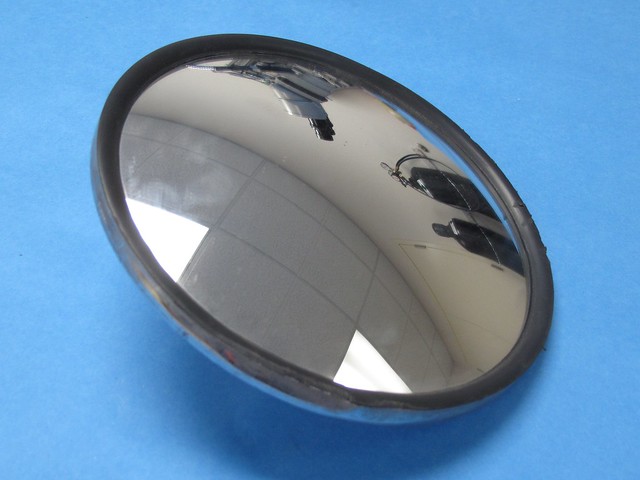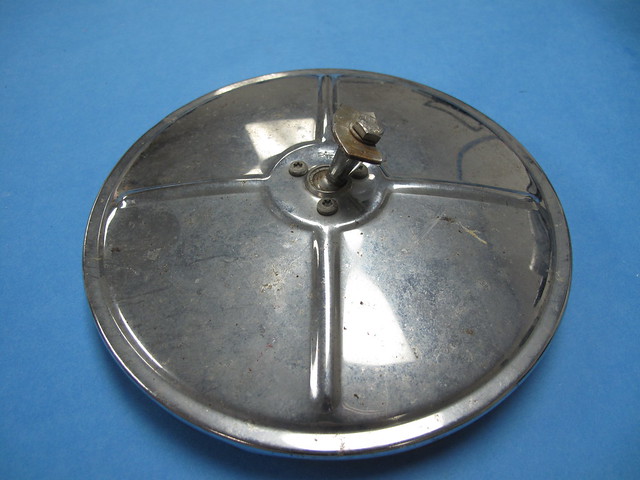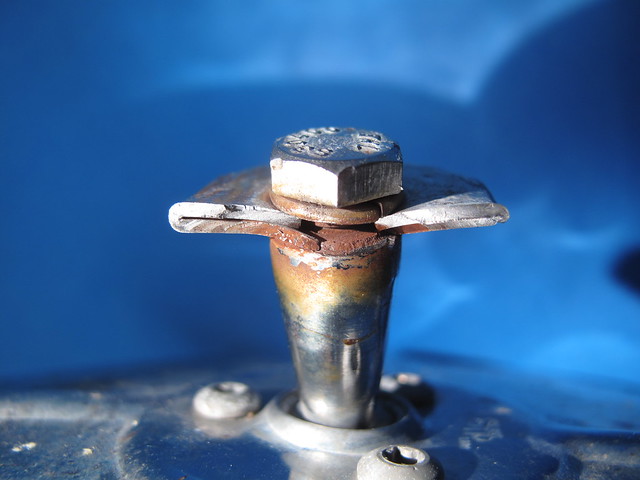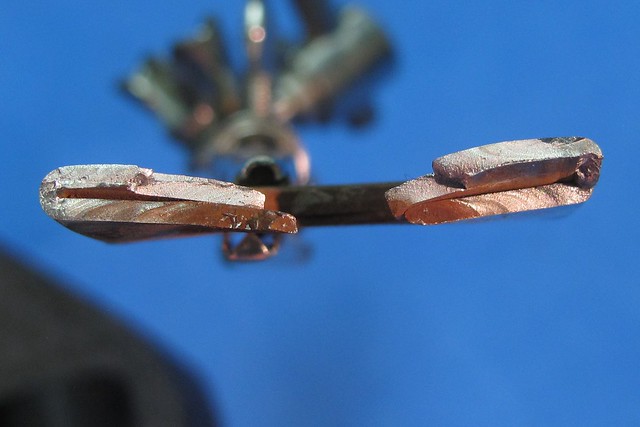The mirror crack'd
July 15, 2012 at 11:46 PM by Dr. Drang
Last week, on a bike ride into work, I passed a big round mirror sitting on the ground off to the side of the path. I stopped, went back to it, and found that the mirror itself was in perfect shape.
It was the mounting hardware on the back side that was broken.
I popped it into one of my panniers and rode off to work. I had no idea what I’d ever use it for, but you don’t just pass up a perfectly good eight-inch convex mirror—or at least I don’t.
Naturally, when I got to the office I looked at the broken mounting hardware more carefully. This was obviously the sideview mirror from a truck, and given that I found it within 50 feet or so of a railroad crossing, my suspicion was that vibrations from the crossing had broken the thin metal that held the mirror to the bracket on the side of the truck.
Not that I thought a single crossing of a railroad track caused the break. No, my guess was that years of vibration had opened a fatigue crack and that this particular crossing was just the last straw.
A quick look at the fracture surface confirmed my suspicions.
There’s a rusty beach mark pattern growing out from the bottom center of the fracture. Pretty clearly, the fracture started at the bolt hole—where there’s a stress concentration—and grew out from there. As the crack lengthened, it exposed more fresh fracture surface to the elements. The amount of rust corresponds roughly to how old that part of the fracture is. You can see that the amount of rust fades as you move out from the bottom center.
I took another photo of the fracture that I’m only moderately happy with.
This one shows the beach marks better, especially to the right of the hole, but I must have messed up the white balance setting as I was shifting between fluorescent lighting and task lighting. In the photo, the whole fracture surface has a reddish cast that isn’t really there. It makes the truly rusted area less distinct. Oh well.
Fatigue cracking, as you recall, comes from the repeated application of load. The primary load on our little mounting plate comes from two sources:
- The weight of the mirror hanging off it.
- Inertial loads associated with the mirror accelerating up and down as it vibrates.
The weight doesn’t change, so it doesn’t really contribute to fatigue.
Inertial loads are calculated by flipping the acceleration term in Newton’s Second Law over to the other side of the equation:
What good is this? It means we can treat the product of the mass and acceleration like a force acting in the opposite direction of the acceleration. If you have an old-fashioned bathroom scale with a dial, you’ve probably noticed that when you first step on it, the dial spins well past your weight. That’s because you accelerate your body upward as you step up onto the scale. The scale reads, briefly, the sum of your actual body weight and the downward inertial load associated with that short upward acceleration.
If you were to jump off the scale, you’d see the dial show a lower weight as you accelerated down into a crouch and then a higher weight as you stopped crouching and sprang off. My scale, unfortunately, is one of those newfangled digital things, and it doesn’t display a reading until the dynamic effects have stopped and the value is stable.
Back to our mirror. As the truck drives along, the up-and-down vibration of the mirror applies down-and-up inertial loads to the mounting hardware. Rough roads, potholes, and railroad crossings can make those inertial loads pretty big. The rust suggests that the mounting plate held on for quite a while, even though it was cracked. But eventually it let go.
Now I need to figure out what to do with the mirror. I know my twelve-year-old would like it, but his room’s already a mess.
-
Yes, I’m simplifying by ignoring the effect of mean stress. Sue me. ↩




